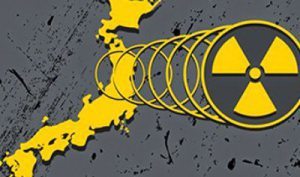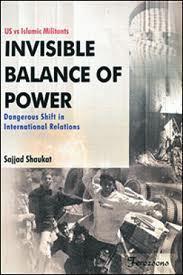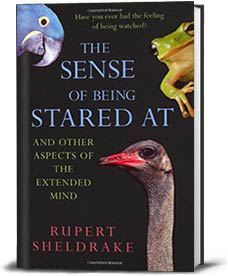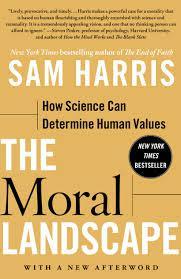Stuart Jeanne Bramhall's Blog: The Most Revolutionary Act , page 1319
September 30, 2015
Who’s Winning the War on Terror?
Guest Post
My friend Sajjad Shaukat has given me permission to re-publish an excerpt of his recent article in Veterans Today about predictions he made in his 2005 book US vs Islamic Militants: Invisible Balance of Power. The book, which I reviewed last year, lays out Sajjad’s theory that the rise of stateless terrorist groups has created an “invisible bala nce of power.” The latter performs the same function in curbing US state terrorism as the Soviet Union did prior to its collapse.
The Veterans Today article calls attention to numerous predictions his book made which have come true. Among other predictions, Sajjad forecast the Sunni-Shia civil war in Iraq, increasing sectarian violence in other Muslim countries, US/NATO attacks on new Muslim countries, increasing state terrorism by western countries and increasing global economic instability.
He raises a good point in his first paragraph. The US clearly isn’t winning the war on terror. All the evidence would suggest the “terrorists” are winning.
Global War on Terror: Pakistani Author’s Future Assessments Proved True
By Sajjad Shaukat
Given the prolonged US-led global war on terror, some media analysts are forecasting the defeat of the United States and its allies, pointing to the acceleration of terror-attacks in volatile countries, financial crises and the heavy cost of endless American war. But no one talks about the future assessments Pakistani author Sajjad Shaukat made in his book, US vs Islamic, Invisible Balance of Power: Dangerous Shift in International Relations, which was published in 2005.
In his research-based book, while taking this new style conflict as an interaction between the “group terrorism” led by Al-Qaeda or Islamic militants and state terrorism by the US, Shaukat points out that Muslim militants have been checking the hegemony of the sole super power.
Read more here: Veterans Today
Sajjad Shaukat is a journalist/author from Lahore Pakistan with a master’s degree from Punjab University in journalism, English and international relations.


September 29, 2015
How Plants Control Us
The Botany of Desire
Directed by Michael Schwarz and Edward Gray (2009)
Film Review
The Botany of Desire is a 2009 PBS documentary based on Michael Pollan’s 2001 book The Botany of Desire: A Plant’s-Eye View of the Word. Both concern the co-evolution of plants and human beings and the vital symbiotic relationships they form. Pollan focuses specifically on the apple, the tulip, the cannabis plant and the potato, detailing how each has evolved to deliberately appeal to human desire. In addition to tracing each plant to its region of origin, he highlights specific biological adaptations it has made to make it appealing to human beings.
The film is full of fascinating factual tidbits, eg that apple trees still grow wild in Kazakhstan and poke up through sidewalk cracks and that potatoes were essential in fueling the development of northern Europe (which is prone to erratic grain harvests) and the industrial revolution.
In addition to providing lavish detail about the art and science of indoor cannabis cultivation, Pollan also examines research into specific cannabis receptors in the human brain. The latter play an important role in helping us forget painful and/or irrelevant memories.
The video concludes by focusing on some of the drawbacks of industrial agriculture, especially our over-reliance on monoculture crops. The loss of diversity in our corporatized foods system makes our food crops far more susceptible to pests. This, in turn, makes us over reliant on toxic pesticides, herbicides and GMOs.
As Pollan stresses at the end of the film, the solution to problems caused by monoculture isn’t more technology. The solution is to end monoculture by diversifying food production.
My only point of disagreement was Pollan’s statement (in 2009) that plants lack consciousness. More recent research suggests that they’re more aware of their environment than we are. See Are Plants Smarter than We Are?
YouTube has taken the film down for copyrights reasons but it can be viewed free at PBS videos


September 28, 2015
What Would Jesus Buy?
photo credit: wikipedia
What Would Jesus Buy?
By Robert van Alkemade (2007)
Film Review
What Would Jesus Buy? is a documentary highlighting the crass commercialization of Christmas in western society. Its main focus is the 2006 Christmas tour of Reverend Billy and the Church of Stop Shopping Gospel Choir. Reverend Billy is one of the culture jamming performance activists featured in the 2001 movie Culture Jam: Hijacking Commercial Culture.*
What Would Jesus Buy? intersperses scenes from the tour with grisly photos of frenzied Black Friday stampedes and interviews with avid consumers as they indulge their compulsive need to shop.
High points include the attempt by Reverend Billy and the Choir to “exorcise” the Walmart home office, their visit to Mall of America in Minnesota (the largest shopping mall in the world) and their appearance at Disneyland on Christmas day. Disney managers (who are world-renowned for their viciousness) had Reverend Billy arrested, and the Church of Stop Shopping Gospel Choir held an overnight vigil outside the Anaheim jail.
Reverend Billy’s website is http://www.revbilly.com/
In October he and the Church of Stop Shopping Gospel Choir will open for Neil Young for his tour of the Pacific Northwest.
*Culture jamming is a tactic used by anti-consumerist social movements to disrupt or subvert media culture and its mainstream cultural institutions, including (but not limited to) corporate advertising. The term is credited to Kalle Lasn, founder of Adbusters magazine and author of the 1999 book Culture Jam: the Uncooling of America.


September 27, 2015
Are Plants Smarter than We Are?
In the Mind of Plants
Jacques Mitsch (2009)
Film Review
This documentary is about scientists who study plant intelligence. When this documentary was first released in six years ago, the notion that plants were intelligent was still extremely controversial. As you will note from the film, nearly all the research into plant intelligence occurs outside the US.
The impetus to study plant intelligence came from the 2002 discovery that rice has nearly twice as many genes (50,000) as human beings (26,000). Most scientists agree that species with more genes are more evolved. When it comes to adaptation and cooperation, there’s really no question that rice plants are more advanced than people.
The University of Bonn is the foremost center for the investigation of plant intelligence. While there are many different definitions of intelligence, the criteria used by Bonn scientists include the ability to assess and react to the environment, the ability to interact socially and the ability to form and retain memory.
Through their research, they have discovered that many plants respond to touch, hard surfaces, electrical charge, electromagnetic radiation and even music. Plants interact socially with other plants by emitting chemicals, either as gasses or through their roots. Carnivorous plants can remember being approached by a tasty insect for as long as an hour and acacia trees retain the memory of being attacked by grazing animals for even longer.
Much of this research is based on Darwin’s hypothesis that carnivorous and climbing plants have some kind of central nervous system that enabled them to make complex choices to aid in their survival. Bonn scientists have discovered a special zone of transition behind the root tip that continuously screens and adapts to information from the soil. This zone of transition functions in almost the same way as nerve synapses do in animals. Plant rootlets explore and process the space around them and make complex choices about how to survive, such as when to flower and when to become dormant.
When this zone of transition is excised, plants lose this ability.
The second video, which is more recent, explores how trees communicate with one other via the fungi that wrap around their roots, enabling them to transfer carbon and nitrogen to one another, based on which tree has the greater need.


September 26, 2015
Acción solidaria | Join us to demand justice for the 43 Ayotzinapa families
*
*
Down the old memory hole: families are still waiting for the Mexican government to arrest and prosecute the police officers/gang members responsible for kidnapping and disappearing 43 student teachers in Ayotzinapa a year ago. John Kerry needs to forget about Russia and devote more attention to the 25,000 Mexicans disappeared by Mexican police, army and paramilitaries: US Senators Pressure Kerry over Ayotzinapa
 Originally posted on Chiapas Support Committee:
Originally posted on Chiapas Support Committee:

(Versión en español sigue abajo)
The Chiapas Support Committee of Oakland asks you and the members of your organization and community to join us in mobilizing to uplift the demand for deep justice and more starting on Saturday, September 26, 2015, the one-year anniversary of the attack, killing and disappearance of 43 student-teachers from Ayotzinapa in the city of Iguala in the State of Guerrero, Mexico.
Starting now and over the next week, call, email, tweet, and fax the President of Mexico saying:
¡Vivos se los llevaron, vivos los queremos!
You took them alive and we want them back alive!
Tell the President of Mexico:
“I join with the families of the 43 disappeared students from Ayotzinapa in calling for a new internationally supervised investigation and review of former-Attorney General Jesus Murillo and other officials’ involvement in the previous investigation, for their obstruction of justice.”
Fax: +52 55 5520 7125
View original 260 more words


September 25, 2015
The Science of Psychic Phenomena
The Sense of Being Stared At and Other Aspects of the Extended Mind
By Rupert Sheldrake
Arrow Books (2004)
Book Review
The aim of The Sense of Being Stared At is to offer a plausible scientific hypothesis for a range of so-called “psychic” and “paranormal” phenomena. In his book, biologist Rupert Sheldrake catalogs an extensive compendium of controlled research into a variety of psychic phenomena.
In all, he examines eight of the most widely entertained theories of “psi,”* the technical term for parapsychological or psychic faculties and phenomena. The one he favors is based on concept of “morphogenic fields, ” a biological process which determines how flowers, fruits and various animal species develop from the embryo stage to take up their specific form.
The Theory of Morphogenic Fields
According to microbiological research, the final form of a tissue or organ can’t be satisfactorily explained on the basis of genetics. Genes act by causing the transcription of specific proteins. Yet no genes have been discovered that cause these proteins to organize themselves into specific shapes.
Scientists who subscribe to morphogenic field theory believe the final shape of biological structures is determined by energy fields similar to gravitational or electromagnetic fields. These fields are believed to contain “attractors,” which draw systems under their influence towards specific goals. The most dramatic examples are found in bees and termites in which some force (ie a morphogenic field) affects the collective behavior of hundreds and thousands of individuals to enable them to construct an architecturally perfect beehive or termite mound. It seems likely that similar morphogenic fields influence the behavior of flocks of birds and schools of fish.
Sheldrake also believes there is good evidence that morphogenic fields also influence human perceptions, thoughts and mental processes. The morphogenic fields created by mental activities are called mental fields. Through mental fields, the extended mind reaches out into the environment through attention and intention and connects with other members of an organism’s social group. He believes these mental fields help explain telepathy, the sense of being stared at from behind, clairvoyance* and psychokinesis.**
The mental fields created by intentions into the future may also play some role in premonitions and precognition.
Vision is a Two Way Process
To understand how the extended mind causes various psychic phenomenon, it’s necessary to entertain the possibility that images we perceive with our eyes don’t merely exist inside our brain, as conventional science dictates. Sheldrake, along with a growing number of biologists, believe that these images occur in front of us in three dimensional space, exactly as we perceive them. In other words, vision involves a two-way process, an inward movement of light and an outward projection of images.
This outward projection functions as a morphogenic field. When a person stares at another person from behind, the projection of the starer’s attention means his field of vision extends out to “touch” the person he’s staring at.
Mind Reading Parrots
Most of Sheldrake’s book is devoted to the wealth of controlled studies which have been conducted into paranormal activity. I found the animal studies the most interesting. My favorite involved a parrot with a 750-word vocabulary. When his owner was in a separate room viewing random images, it was clear from his commentary that he was reading her emotional reaction to them.
Some examples:
When she was looking at flowers: “That’s a pic of flowers.”
When she was looking at a mobile phone: “Whatcha doing on the phone.”
When she was looking at two people in skimpy swimming gear. “Look at my pretty naked body.”
When she was looking at a purple car: “Oh wow, look at the pretty “purple.”
Sheldrake holds the distinction of having his TED talk banned from the TED network, Fortunately his supporters have uploaded the talk to YouTube
*Clairvoyance is the ability to gain present or past information about an object, person, location or physical event through means other than the known senses, as opposed to precognition, which is the ability to see events in the future.
**Psychokinesis is a psychic ability allowing a person to influence a physical system without physical interaction (eg to use “psychic powers” to bend a fork).


September 24, 2015
U.S. Out to get Morales with Cooked up Drug Charges*
*
*
A whistleblower reveals the DEA is up to its old tricks again, fabricating secret indictments against Bolivia’s populist president Evo Morales for cocaine trafficking.
 Originally posted on Hwaairfan's Blog:
Originally posted on Hwaairfan's Blog:
U.S. Out to get Morales with Cooked up Drug Charges*
Pinning drug offences on leaders that the U.S. does not like is a common preoccupation…
Hillary Clinton once accused Evo Morales of paranoia and “fear-mongering,” but, as The Huffington Post pointed out, “The DEA was, in fact, out to get him.”
By Kit O’Connell
 Pope Francis and Bolivia’s President Evo Morales pray upon arrival to El Alto International airport in El Alto, Bolivia, Wednesday, July 8, 2015. The pouch Francis is wearing around his neck was given to him by Morales. It’s woven of alpaca with indigenous trimmings and traditionally used by people in the Andes to hold coca leaves, which they chew to ward off the ill effects of extreme altitude.
Pope Francis and Bolivia’s President Evo Morales pray upon arrival to El Alto International airport in El Alto, Bolivia, Wednesday, July 8, 2015. The pouch Francis is wearing around his neck was given to him by Morales. It’s woven of alpaca with indigenous trimmings and traditionally used by people in the Andes to hold coca leaves, which they chew to ward off the ill effects of extreme altitude.
A Drug Enforcement Agency informant-turned whistleblower revealed the agency’s plot to undermine the Bolivian government through secret indictments for cocaine trafficking.
The sealed indictments were revealed as…
View original 582 more words


September 23, 2015
Our Unique Capacity for Mass Extermination
The Superior Human
Directed by Samuel McAnallen (2012)
Film Review
A short highly amusing documentary tackling the myth that human beings are superior to other species.
The film starts by making a list of so-called uniquely human skills and finding other animals who demonstrate equal or superior capabilities in the same areas.
Examples I found most impressive were termite architectural skills, an elephant who can paint his own self-portrait, crows who routinely invent and use tools, cats and dogs who can sniff out cancer and dolphins and prairie dogs with complex language skills. Experiments with prairie dogs indicate they communicate complex ideas with complicated grammatical constructs. For example: “The short man in the blue shirt is coming and he’s carrying a gun.”
According to filmmakers, the only truly unique skill possessed by human beings is their capacity to mass exterminate other life forms.


September 22, 2015
82 Contaminated Radioactive Waste Bags from Fukushima Washed Away by Typhoon Floods
*
*
A good reminder not to eat seafood from Japan or the Pacific Ocean.
 Originally posted on Counter Information:
Originally posted on Counter Information:
By RT
Global Research, September 21, 2015
RT 11 September 2015
 At least 82 bags filled with contaminated material from the crippled Fukushima nuclear plant have been swept away by flood water as typhoon Etau hit Japan, officials said. TEPCO said rainwater from the nuclear plant has been leaking into the Pacific.
At least 82 bags filled with contaminated material from the crippled Fukushima nuclear plant have been swept away by flood water as typhoon Etau hit Japan, officials said. TEPCO said rainwater from the nuclear plant has been leaking into the Pacific.
Flooding caused by Tropical Typhoon Etau has swept at least 82 bags suspected to contain radioactive grass and other contaminated materials that had been collected at the site of the crippled Fukushima Daiichi nuclear power plant (NPP). They had been stored in a nearby town in the same prefecture, the Environment Ministry said on Friday, according to local media. Though the Ministry went on to say that most of the bags had been recovered undamaged, local media reported that only 30 of the bags had been found.
Officials said the flooding had not reached the nuclear reactors damaged…
View original 461 more words


September 21, 2015
Resurrecting Morality
The Moral Landscape: How Science Can Determine Human Values
by Sam Harris (Bantam Press 2010)
Book Review
The historical record indicates religion has been pretty hopeless in guiding human beings in leading moral and ethical lives. The Moral Landscape outlines a proposed morality based on objective scientific principles.
Sam Harris, a PhD neurophysiologist, bases this proposed morality on the principle of maximizing human well being. Because human well being is a function of world events and states of the human brain, there must be some truths about morality that can be scientifically verified. Harris maintains that a more detailed understanding of these truths would greatly improve the quality of human life.
For example, he asks whether corporal punishment of children, female genital mutilation and honor killings* are beneficial to human well being. There must be an answer to these questions (which can be established by research), even if we don’t know, at present, what it is.
The book is highly critical of the “cultural relativism” advocated by secular liberals and many US scientists when they insist there are no objective answers to the moral questions Harris poses. He believes this attitude leaves secular societies at the mercy of fundamentalist religion. Harris (an avowed atheist) also argues that obedience to God creates a morality that is more concerned with a theoretical afterlife than human well being in this lifetime.
The development of a science-based morality would have to weigh the ultimate well being of the individual vs the general well being of the society. It would also be open to controversy and dissenting viewpoints, like all scientific disciplines.
Harris’s chapter on religion describes how Freud, Marx and other prominent nineteenth century intellectuals believed the world religions would disappear with the scientific advances that enabled the industrial revolution. With the exception of the US, their predictions proved correct: most developed societies are predominantly secular.
At present most societies become more secular as they become more prosperous stable and democratic (in New Zealand, only 10% of the population attends church). Moreover the least religious countries (Scandinavia and the Netherlands) have the best societal health. Research shows that loneliness, helplessness and poverty are poorly conducive to happiness and moral behavior.
At present fundamentalism is limited to the US and developing countries. Harris believes that high levels of inequality have caused America to take a different path than other developed countries. Extreme poverty in many areas of the US is linked to low levels of educational achievement, superstitiousness, excessive religiosity and racism.
* Honor killings are acts of vengeance, usually death, committed by male family members against female family members, who are held to have brought dishonor upon the family.


The Most Revolutionary Act
- Stuart Jeanne Bramhall's profile
- 11 followers








